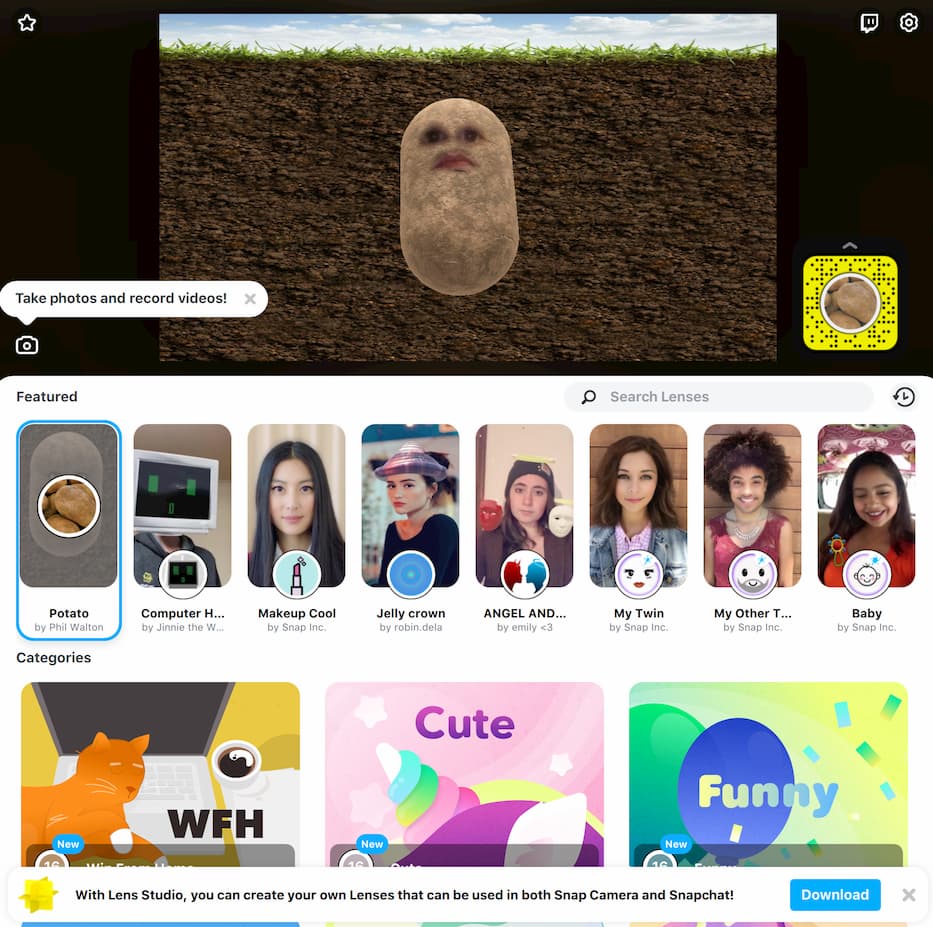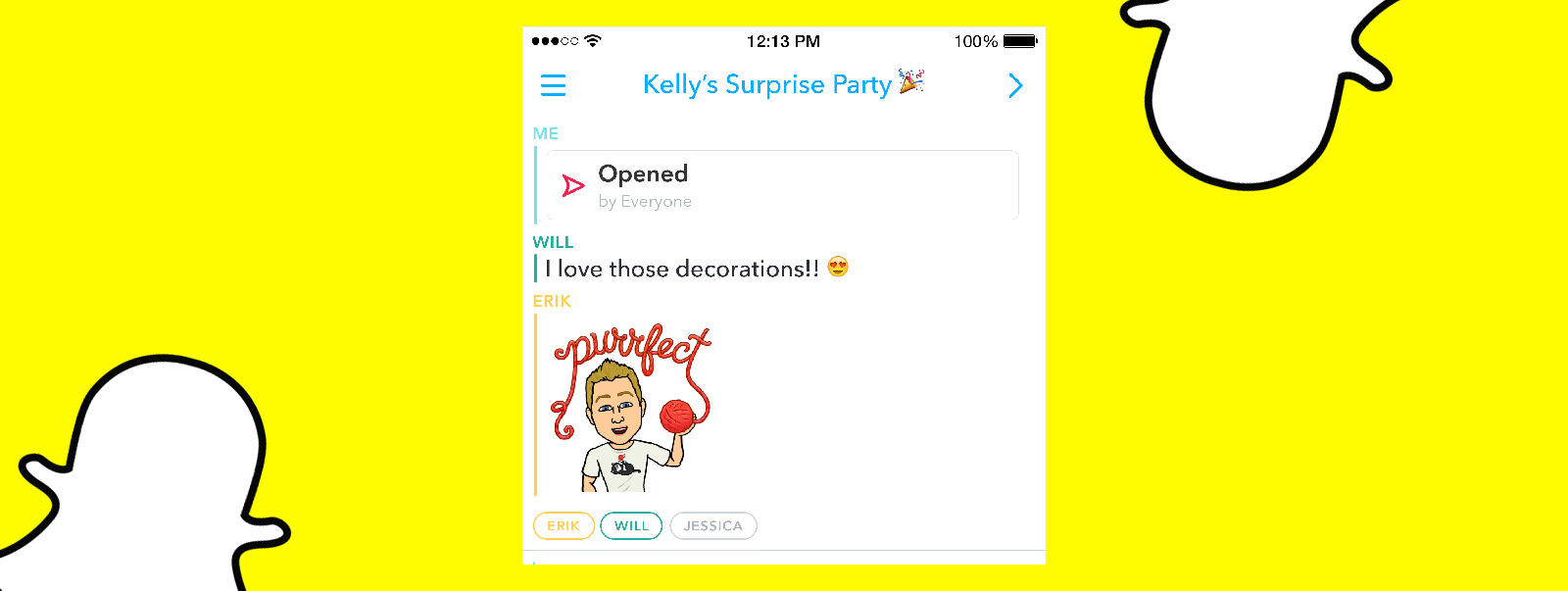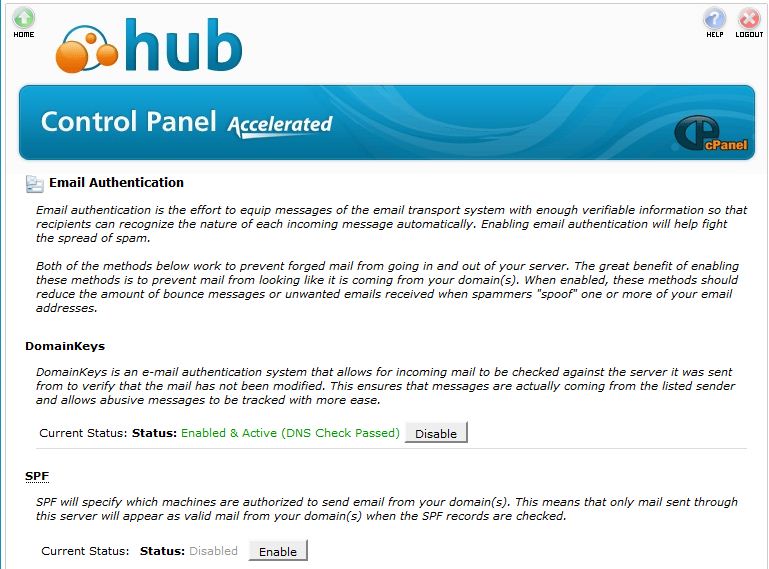Snapchat is primarily used for creating multimedia messages referred to as "snaps"; snaps can consist of a photo or a short video, and can be edited to include filters and effects, text captions, and drawings. Snaps can be directed privately to selected contacts, or to a semi-public "Story" or a public "Story" called "Our Story." The ability to send video snaps was added as a feature option in December 2012. By holding down on the photo button while inside the app, a video of up to ten seconds in length can be captured. Spiegel explained that this process allowed the video data to be compressed into the size of a photo. A later update allowed the ability to record up to 60 seconds, but are still segmented into 10 second intervals.
On May 1, 2014, the ability to communicate via video chat was added. Direct messaging features were also included in the update, allowing users to send ephemeral text messages to friends and family while saving any needed information by clicking on it. According to CIO, Snapchat uses real-time marketing concepts and temporality to make the app appealing to users. According to Marketing Pro, Snapchat attracts interest and potential customers by combining the AIDA model with modern digital technology.
You are in control of some aspects of the app but not all, other users can screen grab your pictures or messages. You are also able to receive snaps from people you don't know and those you don't know can see your snaps if you choose to set up your profile in this way. The June 2017 release of "Snap Map," a feature that broadcasts the user's location on a map, was met with concerns over privacy and safety.
The map can be zoomed in to feature detailed geographical information, such as street addresses. The Daily Telegraph reported that police forces had issued child safety warnings, while other media publications wrote that safety concerns were also raised for teenagers and adults unaware of the feature's actual behavior. Although there has been an increase in advertising on Snapchat, Snapchat has stated that they do not plan on running ads on Snap Map stories. However, there are no hashtags, suggested user lists, or other features that make it easy to get in front of people looking for new accounts to follow on the app.
Unless you're one of the few publishers on the Snapchat's Discover channel, people will have to add your brand like they would any friend — and it's unlikely they have your phone number saved. To grow your audience, you'll need to use the power of your other social media networks and digital marketing channels. Rather than a traditional online notification, a blue pulsing "here" button is displayed within the sender's chat window if the recipient is currently viewing their own chat window. When this button is held down, a video chat function is immediately launched. By default, messages disappear after they are read, and a notification is sent to the recipient only when they start to type. Users can also use messages to reply to snaps that are part of a story.
The video chat feature uses technology from AddLive—a real-time communications provider that Snapchat acquired prior to the feature's launch. In recent years, Snapchat has become one of the most popular little messaging apps in the market today – especially among the young. For smartphone users, the app provides a means for creative messaging that enables senders to snap a photo, add a caption, create or add graphics effects, and then send it off to their friends and family members. Best of all, those recipients can only view the "snap" for up to ten seconds, after which the message simply disappears.
Snapchat has often been seen to represent a new direction in social media, with its users craving a more in-the-moment way of sharing and communicating via technology. Evan Spiegel himself described Snapchat as primarily a camera company. Nevertheless, the growing mobile app moved to offer distinct publication, media, and news content within its Discover channel, as well as with its overall style of presentation.
The implementation of these features are meant to allow users to easily shift between text, audio, and video chat as needed while retaining an equal level of functionality. In June 2018, Snapchat added the feature of deleting a sent message (including; audio, video, and text) before it is read. A feature introduced in August 2018 allows users to send Musical GIFs, TuneMojis. From its humble origin as a fun way to send self-erasing photo messages, Snapchat has grown into one of our favorite social media apps.
And not just for the hilarious face filters and cool geographical photo tags. It's become one of the best ways to share memories, maintain friendships, and stay up to date on news and views from our go-to websites. For every snap, you publish to your stories you get a point.
So, start sending out more photos and videos to your stories but keep it interesting. I have seen users posting blank snaps which isn't a good way to engage on social media just for getting points. When shared with a user's current story, the memory would have a timestamp to indicate its age. Content in the Memories storage area can be searched by date or using a local object recognition system. Snaps accessible within Memories can additionally be placed into a "My Eyes Only" area that is locked with a Personal identification number . Snapchat has stated that the Memories feature was inspired by the practice of manually scrolling through photos on a phone to show them to others.
In April 2017, the white border around old memories was removed. Snapchat is an American multimedia instant messaging app and service developed by Snap Inc., originally Snapchat Inc. One of the principal features of Snapchat is that pictures and messages are usually only available for a short time before they become inaccessible to their recipients. It also allows users to keep photos in the "my eyes only" which lets them keep their photos in a password-protected space. It has also reportedly incorporated limited use of end-to-end encryption, with plans to broaden its use in the future.
Snapchat automatically delete from their servers the photo and video messages you send once the message has been open or expires. Snapchat may keep other content, such as your story, for longer periods of time. Snapchat's policy is that they keep content which is shared on their public features in order to "offer and improve the services". In this option menu you can also control your "Snap Story". Your story is different to the once off messages you send.
You can send photos and videos to your story where they will stay for up to 24 hours. You can choose to delete things from your story during this period, but other users can screen grab on this function. You can choose to have your story open to just your friends or everyone. Snapchat is an app which allows you to share pictures, messages and videos with friends that disappear after a period of between 1 and 10 seconds when sent to friends, or up to 24 hours on your snap story. Snapchat also allows you to live video stream and add your pictures/movies with event and locations stories. Snapchat also allows you to live video stream and add your pictures/videos with event and locations stories.
I think it all comes down to personal preference and why you're on social media to begin with. For my personal life, I love that I can announce special events, celebrate friends and family, take quick videos and photos, add in geo-filters and emoji stickers and search the world by hashtag, all in one place! Snapchat allows you to do that as well, I'm just not a fan of the time limit. This feature protects photos from the eyes of other people. It was designed for individuals wanting to share their memories with people without exposing more intimate photos. This is Snapchat's way of acknowledging that the app is used for sexting.
Before this attribute, Snapchat was known as a hub for sending naked pictures due to the premise that the pictures disappear after an allotted amount of time. Now, Snapchat gives you a place to store more personal shots forever. Consider taking a photo of branded items to get your logo in the image. From its earliest days, Snapchat's main demographic has consisted of the Generation Z age group.
In 2014, researchers from the University of Washington and Seattle Pacific University designed a user survey to help understand how and why the application was being used. However, it appears that Snapchat is used for a variety of creative purposes that are not necessarily privacy-related at all. In the study, only 1.6% of respondents reported using Snapchat primarily for sexting, although 14.2% admitted to having sent sexual content via Snapchat at some point.
These findings suggest that users do not seem to utilize Snapchat for sensitive content. Rather, the primary use for Snapchat was found to be for comedic content such as "stupid faces" with 59.8% of respondents reporting this use most commonly. The researchers also determined how Snapchat users do not use the application and what types of content they are not willing to send. Private message photo snaps can be viewed for a user-specified length of time before they become inaccessible. However, these notifications can be bypassed through either unauthorized modifications to the app or by obtaining the image through external means.
In September 2015, Snapchat introduced the option to purchase additional replays through in-app purchases. The ability to purchase extra replays was removed in April 2016. Another reason we might use your information is because we have—or a third party has—a legitimate interest in doing so. Because most of our services are free, we also use some information about you to try and show you ads you'll find interesting.
We explain our legitimate business reasons for using your information in more detail here. It's also important to know that Snapchat itself saves some information, including meta-data related to snaps that users have sent – but not the content of those messages. In the company's Law Enforcement Guide, Snapchat outlines the process that law enforcement officials need to go through to obtain user account information – including subpoenas, search warrants, and other court orders. The bottom line is that user details and messaging histories could be open to law enforcement inspection because the company's official policy is to cooperate with those requests when certain requirements are met. When I say permanent, I mean the group stays forever, not the content.
This function is great because it's like your own personal snap party. Everyone you invite to add to the story can throw a snap or two in there to share. Whether your friend was at a restaurant eating something delicious and wanted to make you jealous, or someone captured one of your friends being dumb and needed everyone in the group to see it . Snapchat Stories have become increasingly popular with younger users.
Stories allow users to compile photos/videos for all their friends to view and publish them as a Story. This is something users need to be careful with as it gives less control of who sees your stories. The best advice is not to share anything you would not want your Granny to see. This, along with its rapid growth of users and status as owning the mobile video space, has attracted the attention of big brands and those looking to get more time in front of the coveted Millennial crowd. This means you'll also have the ability to use the Snapchat Ad Manager analytics tool to learn more about the success of your advertising efforts among your followers in real time. At one time, Snapchat was the playful app of the mobile-obsessed teen and young adult group who were drawn to disappearing messaging and the candid feel of communication.
And brands avoided it, understandably confused about how to interact on the social media platform and why they should invest in creating content that was only going to disappear. The cookie is used to tracks the users activity across the internet on the browser such as visit timestamp, IP address, and most recently visited webpages. And may the data send to 3rd party for analysis and reporting to help their clients better understand user preferences. Plenty of users naively trust third-party apps that they share their personal data with.
There were unofficial apps that offered interesting features for your apps. A lot of teenagers weren't aware that they were giving access to a malicious app that steals snaps and shares them online. We may also use these technologies to collect information when you interact with services we offer through one of our partners, such as advertising and commerce features. For example, we may use information collected on other websites to show you more relevant ads. If you prefer, you can usually remove or reject browser cookies through the settings on your browser or device. Keep in mind, though, that removing or rejecting cookies could affect the availability and functionality of our services.
To learn more about how we and our partners use cookies on our services and your choices, please check out our Cookie Policy. To start a live voice or video call,just tap the voice or video call icon and it'll begin ringing the other person immediately. If they don't answer within a few seconds, you'll see a pop-up notification asking you if you'd like to send a voice or video message instead. These voice and video messages are identical to the 10-second voice and video messages described above. Of course, that has led many people to believe that their Snapchat app gives them a license to send photos, videos, and messages without fear of the content ever being read by anyone other than the user.
Most assume that Snapchat's "evidence" completely disappears after that brief viewing period. They're wrong, of course, and that can lead to some unexpected results in situations where law enforcement and the courts are involved. And because it's still in its infancy, it's a lot easier to get noticed on the platform. In fact, a study found that when users view a brand's Snapchat Story, they watch it in its entirety 88% of the time. That's a significant break from accidentally clicking on banner ads, scrolling past ads, and skipping pre-roll video.
Memories can fuel your Snapchat marketing by helping you to create more cohesive Stories and themed videos. When at an event, multiple people can use the app and add media to your Memories. Then, you can review all the content, pick the best, and craft an interesting Story for that day. Simply tap the button in the menu bar and find one to add to your photo or video. You can add as many stickers to your Snap as you'd like and can customize the size and location of them by pinching and zooming in or out and dragging the image on the screen. A Snapcodeis similar to a QR code — you can use your phone's camera to take a photo of a Snapcode to add a friend.
Spotlight snaps are a type of snap that a user can send to the new Spotlight section. You capture them like any other snap (there's a how-to here), but instead of sending them to a friend or to your story, you send them to Spotlight. Snap said Spotlight snaps should be vertical videos with sound. If you attempt to send still-image photos, horizontal Snaps, blurry Snaps, or text-only snaps, they won't show up in Spotlight. Snapchatters can, therefore, keep their accounts from public view while still posting content in Spotlight.
In fact, anyone can submit their snaps to Spotlight for others to view; you just have to tap "Spotlight" when posting to send it to the section. Snap said it's even paying some creators to post - promising to fork over $1 million between the most popular creators on the app per day until 2021. This is a necessary category.CookieTypeDurationDescriptioncookielawinfo-checkbox-advertisementpersistent1 yearThis cookie is set by GDPR Cookie Consent plugin.
Used to help protect the website against Cross-Site Request Forgery attacksJSESSIONID11 yearUsed by sites written in JSP. As I mentioned earlier in method 2 that sending the same snap to multiple friends contributes to your snap score. It is not possible to create a large number of snaps of your happenings in a small amount of time. Therefore you will have to create some useless snaps to send. Unlike Facebook or Instagram, Snapchat doesn't show the number of followers or friends on a profile.
According to Snapchat, snap score is determined based on the number of snaps you have sent/received and snaps posted to your stories. But there are a few other factors affecting snap score as well. In order to make your account stand out or have some sort of authority, you might want to show off a high score.



























